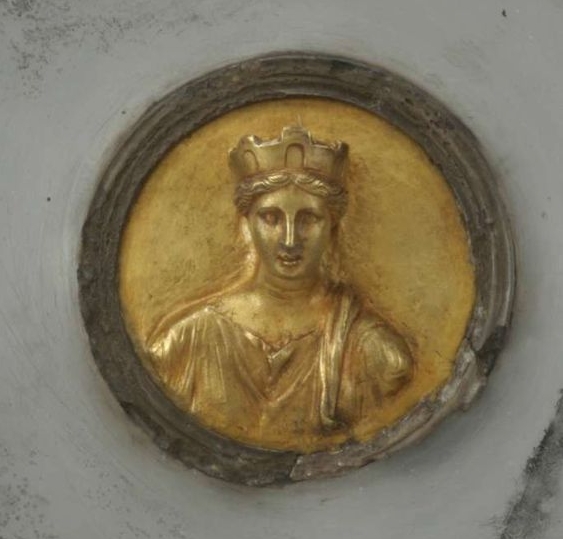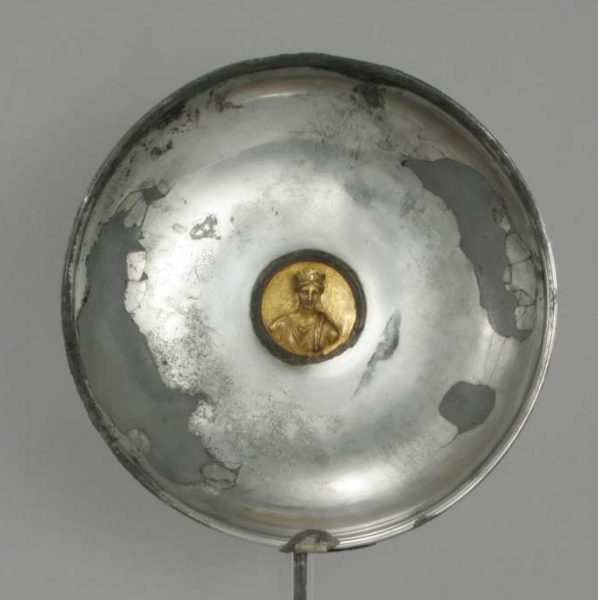Comb with phytomorphic and zoomorphic decoration

“The ivory object, worked with the techniques of intaglio, engraving and overpainting, was found in Pompeii. It dates back to the second half of the first century AD (50 -79 AD).
The small bone comb is rectangular with curvilinear short sides; it has two rows of teeth. The central band is decorated with engravings: in the middle of the composition there is a basket full of fruit, from which a bunch of graves is hanging; the two ends were probably specular, but the left side is unfortunately incomplete, on the right side, instead, it is still possible to admire an elegant standing peacock, behind which stands a leafy bush.
On the decorated surface remain numerous traces of color, especially red in its different gradations: the light shades have been used for flowers and fruit; the wicker, with which the basket is woven, is of a darker shade, tending to brown, the bunch of graves is, instead, violet.” source
Jewel box with mermaids, caryatids and cupids

“The ivory object, worked with the technique of engraving, comes from Cuma (Pozzuoli, Naples) and dates back to the Hellenistic-Roman period (third century – fifth century CE).
The rectangular jewel box is supported by four small feet in the shape of mermaids. The decoration of the front side and one of the short sides consists of small plaquettes depicting standing figures of draped caryatids; the figures on the edge have their arms held along their sides. On the other short side of the box, there are plaquettes portraying winged cupids with their arms folded behind their backs. The plaquettes, as well as the small molded cylindrical pillars and the small frames which run along the edges and the lid, are made of ivory, while the box itself (today reconstructed) would have been entirely made of wood. A series of precious objects were found inside the jewel box including a bronze mirror, a gold ring, two silver fibulae covered with gold filigree leaves, a small pyx, a needle, a small spatula and a bone comb, a spindle and a large pin.” source
Phiale decorated with the bust of a woman wearing a towered crown

“The wrought silver cup, which is part of the silver treasure found in the House of Menander in Pompeii in 1930, is worked with the techniques of embossing and gilding and dates back to the first century AD (1 – 79 AD).

The cup is characterized by a large hemispherical basin based on a low foot; in the middle of the basin, is the gilded bust of a woman worked in high relief and inserted in a molded circle.
The woman, probably the personification of a town, presents a thin face framed by hair parted in the middle and combed with smooth locks; she is wearing a chiton and a cloak and, on her head, a towered crown with town doors. Silver cups with golden emblems attested by literary sources were also found at Boscoreale and were probably destined to be only exhibited.” source
Cup with phytomorphic decoration

“The object was found in a tomb of the necropolis of Capua and dates back to the Augustan Age (27 BC – 14 AD).
The rock crystal cup, worked with the techniques of intaglio and engraving, presents a thickened rim, a deep basin, vertical handles connected to the rim with a horizontal flat joint and a distinct base. It is especially characterized by the decoration with plant motifs, consisting of little branches with lanceolate leaves where midribs are engraved. The shape of the cup or skyphos reminds silver specimens, while the decoration, that evokes the consumption of wine, for which the object was evidently made, is also recognizable on similar clay or bronze objects. The uniqueness of the cup consists not only in the decoration of the walls, which required a great skill from the glassmaker, but also in the size absolutely extraordinary and the rarity of the quartz, of which it is made, of Egyptian or Indian origin.” source
